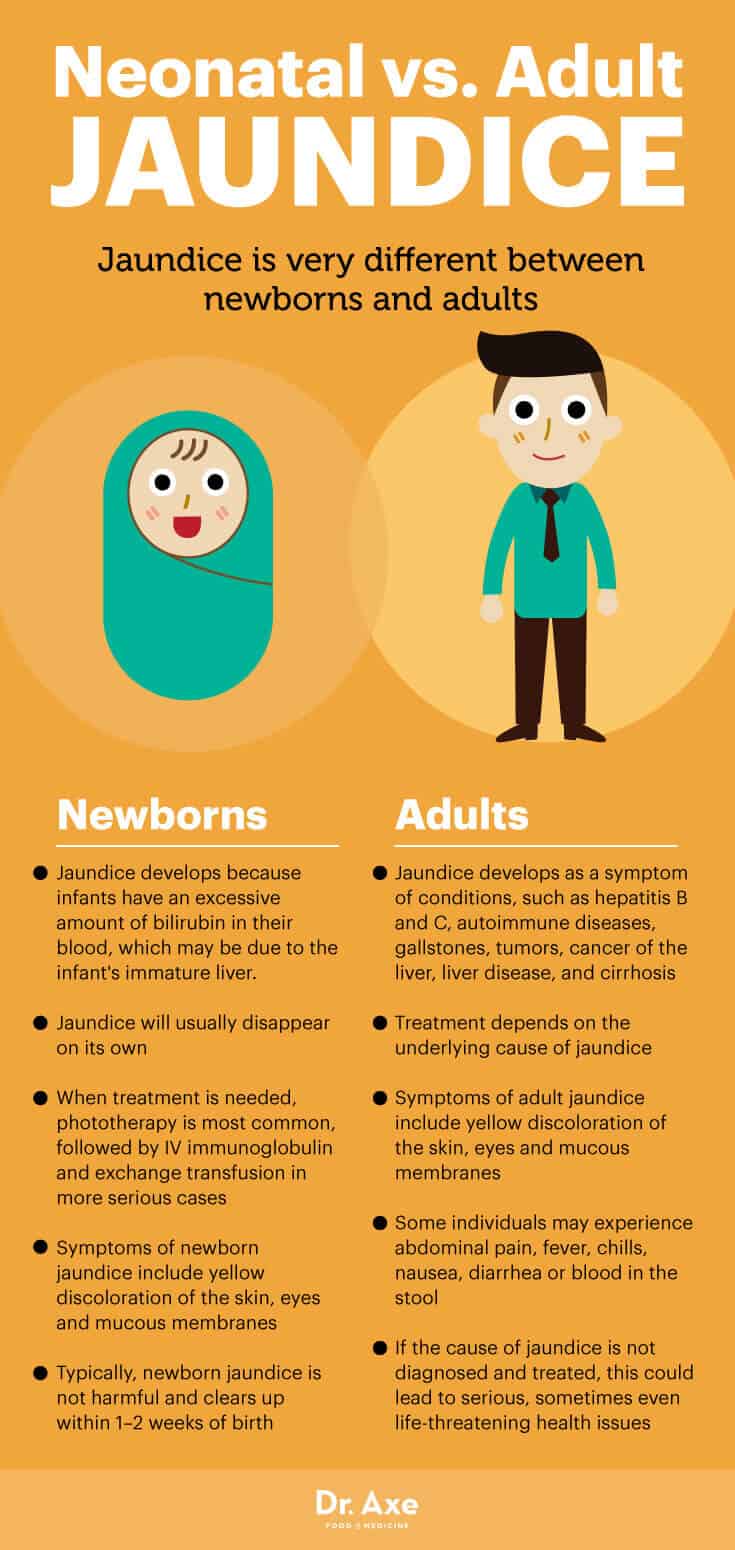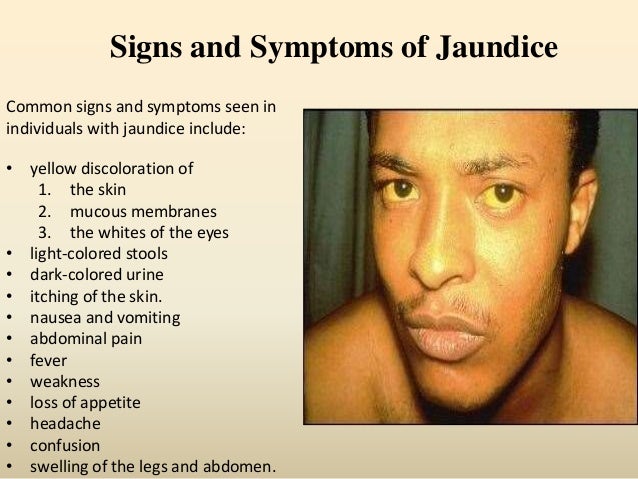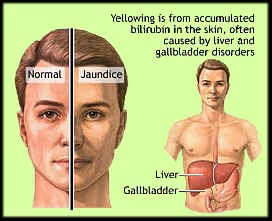Newborn jaundice symptoms such as yellowing of the eyes and skin is common. The newborn may also have a fever, ill appearance, and poor feeding. Learn the causes and treatments of newborn jaundice.


Jaundice, also known as icterus, is a yellowish or greenish pigmentation of the skin and whites of the eyes due to high bilirubin levels. It is commonly associated with itchiness.

JAUNDICE OVERVIEW. Jaundice is a yellow discoloration of the skin and/or whites of the eyes that is often seen in newborn infants. The discoloration is caused by a yellow substance called bilirubin.

Jaundice is a yellowing of the skin and whites of the eyes. It can affect newborns or adults, and treatment depends on the cause. Learn more here.
ABO incompatibility. ABO incompatibility disease afflicts newborns whose mothers are blood type O, and who have a baby with type A, B, or AB.. Ordinarily, the antibodies against the foreign blood types A and B that circulate in mother’s bloodstream remain there, because they are of a type that is too large to pass easily across the placenta


Mononucleosis, also referred to as mono, is an infectious disease caused by a virus. Often dubbed the kissing disease, the virus passes from person to

Each cell, or leukocyte, has a different job in the body which is explained in the Differential section.. Normal Adult Range: 3.8 – 10.8 thous/mcl Optimal Adult Reading: 7.3


Information about jaundice causes such as other diseases or conditions (malaria, hepatitis, cirrhosis, drugs, cancer, etc.). Symptoms of jaundice include yellow discoloration of the eyes and skin, light colored stools, and more.
~ by Jo Jordan. Jaundice is not a disease, but rather a symptom that can occur as a result of a variety of diseases.. Also referred to as icterus and cholestasis, jaundice appears as a yellowish discoloration of the skin and whites of the eyes (sclerae) caused by the abnormal buildup of bilirubin in the blood.

Bilirubin is a yellow compound that occurs in the normal catabolic pathway that breaks down heme in vertebrates.This catabolism is a necessary process in the body’s clearance of waste products that arise from the destruction of aged red blood cells.
